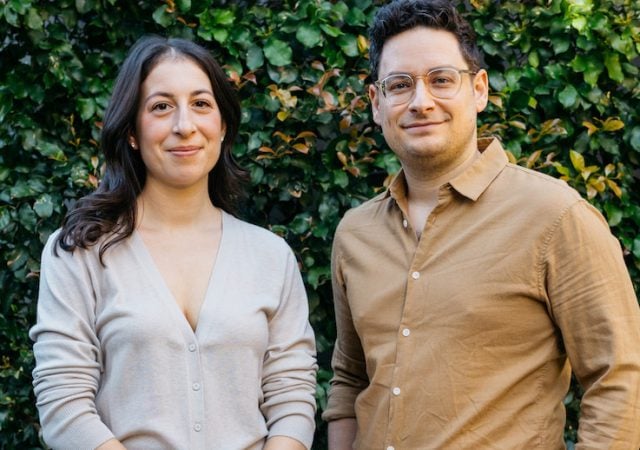Startup metrics can be complex and overwhelming for founders, and many have a single-minded focus on revenue.
But while revenue can tell a story of sales and success, this in isolation is not the most insightful number that a business reports. Instead it is unit economics that has the power to simplify the way that founders think about their business, and paint the most accurate picture about the health and viability of their business for investors.
Unit economics measures the profitability of a startup on a cost per unit basis and enables the founder to answer the most important question of all: how much profit does a business need to make from each customer before it breaks even on the cost of acquiring that customer?

Rick Click Capital’s Benjamin Chong
The “unit” a startup references in their unit economics should be the smallest logical piece that allows the founder to understand the performance of the startup as a whole. For a SaaS startup this might be one subscription to a service, whereas for a medtech startup this could be the sale of an individual device or software license.
Not all customers are created equal or profitable
The type of relationship a business has with the customer dictates how cost per unit is calculated. If a startup is anticipating a long-term relationship with the customer, the cost of acquiring that customer can be offset over a longer period of time. After a number of interactions with the customer the business is eventually able to make a profit from the customer and recoup the cost spent on sales and marketing to secure this customer.
It is this ratio between the lifetime value (LTV) of the customer and the customer acquisition cost (CAC) that tells founders and investors how profitable each customer will be. Typically, a ratio of 3:1 or greater is considered ideal. This means that a startup will receive three times the value of the acquisition from each new customer. If a customer costs $100 to acquire through marketing and sales, then they should generate $300 in gross profit over time.
If a ratio is low, such as 1:1, this means that it costs as much to acquire a customer as they will generate in gross profit through the sale of the service or product. Similarly, a ratio of 5:1 means a customer is worth five times more to the business than the cost of their acquisition and, therefore, allocating more money to marketing could be a sensible investment.
A crucial element of LTV/CAC ratio is calculating the time taken for a startup to “payback” the cost of acquisition.
Let’s assume the ratio is 3:1 and customers continuing on a SaaS-style subscription for three years, this means the payback period is one year, meaning the startup would need capital to allow it to scale if the payback period were shorter.
Unit economics is important for a number of reasons. It provides a snapshot of the health and viability of a startup, it allows for a more accurate construction of a startup’s financial model, and it enables a founder to make data-driven decisions around its growth potential.
Unit economics also helps determine various break-even points and contribution margins, allowing the founder to calculate the return on the investment as well as enabling more accurate forecasting of future performance.
Uber, the unit economics of a double-sided marketplace
Although Uber is a double-sided marketplace with riders and drivers both generating revenue for the company, the cost of acquiring the driver is the major focus of unit economics. Whereas riders only needed minor incentives and more easily converted to long term customers, drivers are a far greater challenge for profitability.
In Uber’s early years of operation, new drivers received sign-up bonuses as high as $5,000 just for completing a few rides on the app.
But the numbers didn’t stack up with only 20% of drivers remaining on Uber’s platform after one year.
This churn resulted in negative unit economics where the cost of acquisition was never offset by the value they brought Uber.
This churn led to downward pressure on the incentives offered to drivers – AKA their cost of acquisition.
These days the cost of acquisition is now around $650 in the US and based on the average number of trips, Uber makes around $230 per month from each driver, meaning that it will take them an average of three months to earn back the cost of acquiring the driver.
The dynamic nature of unit economics
Unit economics are not static but rather subject to change over time. The variables that determine the revenue and expenses of a product or service often change and economies of scale may reduce the cost of developing the product.
A changing product or means of production may also impact its unit cost. This includes factors such as moving production offshore or a change to a more affordable material or supplier of the raw materials.
As a business matures and reaches critical mass or saturation in one customer segment, it will be necessary to target different customer groups and this, again, can impact the cost of customer acquisition A niche and harder to reach audience group may necessitate larger spend on sales and marketing. Changing the mix of channels to market can also impact the cost to acquire.
Invest in time to understand unit economics
Investors care greatly about the unit economics of a startup but recognise that this will vary according to the stage of the business.
For a very early stage startup negative unit economics, where the business fails to have any profit at all from a customer, are acceptable if pilot customers are helping the startup to achieve early levels of product market fit.
An investor will be looking for founders to identify and justify key assumptions used to calculate the LTV and CAC, such as the length of time a founder is assuming that a customer will stay with the business.
Other factors such as the extent to which costs will fall as a business scales are very important to predicting future profitability and changing unit economics.
Investors will also be keenly interested in the payback time, being the time taken, on average, to repay the cost of customer acquisition.
In the US the average startup has a payback length of 15 months. For investors a shorter payback time is preferable as this means less capital is needed and a startup can grow quickly if the break-even point is reached sooner.
The unit economics of businesses that have products in the real world such as WeWork and its office leases can add a layer of complexity. Negative unit economics are not desirable nor sustainable over the long time.
Investors are acutely aware that technology may provide a disruptive element, but the business model has costs like traditional businesses and losing money on every transaction can’t be offset by a greater volume of sales.
Investors will expect these types of businesses to show transparency and greater detail around the unit costs.
Additionally, pricing will need to be robust as investor money shouldn’t be used to subsidise negative contribution margins. Selling the product too cheaply in the long run is not sustainable as this may indicate a lack of product market fit.
The secret to optimal unit economics is understanding the key drivers of CAC and LTV, and keeping a watchful eye on these numbers as the startup progresses.
- Benjamin Chong is a partner at venture capital firm Right Click Capital, investors in high- growth technology businesses.




















Trending
Daily startup news and insights, delivered to your inbox.